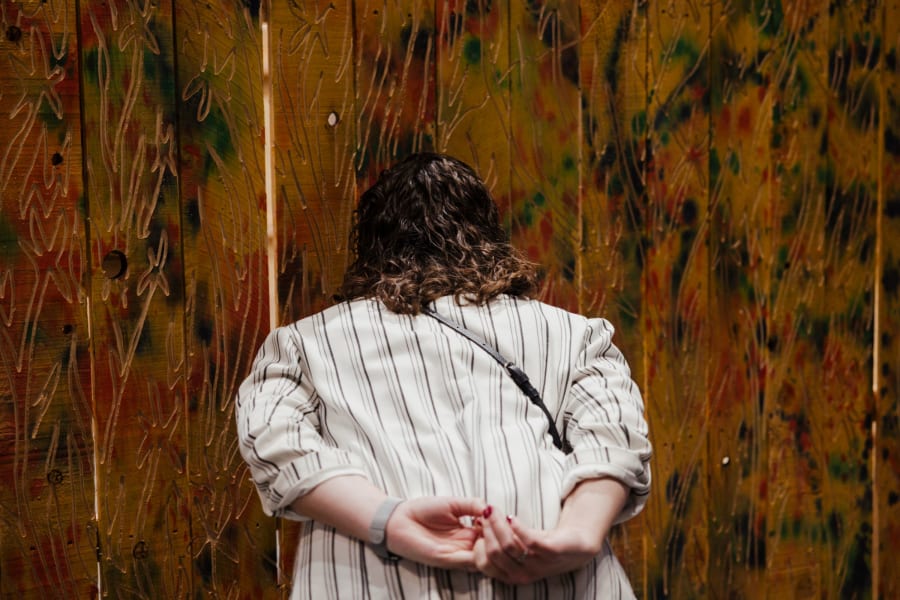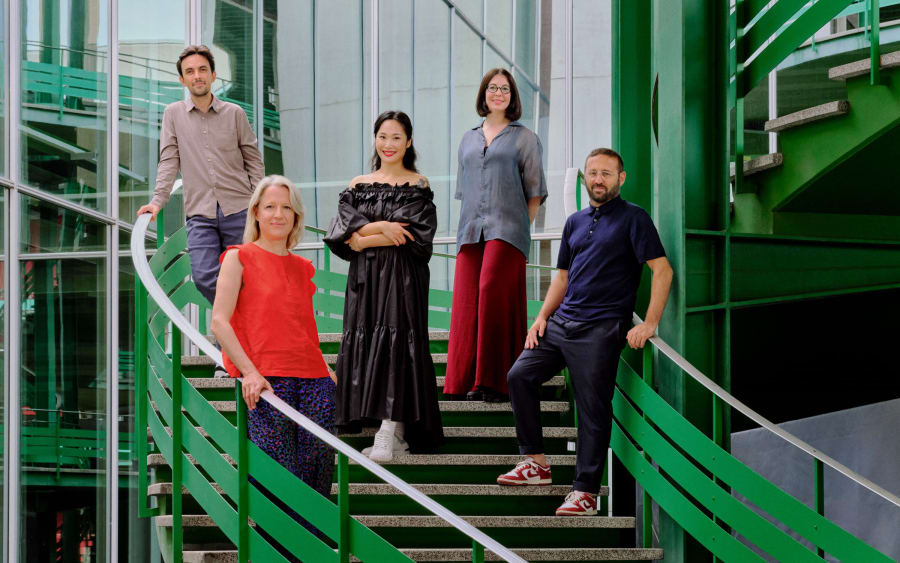Vũ Dân Tân – 10 Chancery Lane Gallery
In the 1990s, as Vietnam’s economy underwent seismic reforms, artist Vũ Dân Tân (1946–2009) started to make money. Or drawings of it, at least. Reimagining currency as a vessel for playful critique, Tân began drawing handmade bills with his own image at their center. Soon, he incorporated tongue-in-cheek pictorial references to mythology, literature, and global politics. Tân, who is remembered for embracing art’s potential for wit and subversion, is often hailed as one of Vietnam’s first contemporary art icons. At 10 Chancery Lane Gallery’s booth, works from the ‘Money for All Times’ series will be shown alongside his ‘Venus in Vietnam’ sculptures – miniature female figures encased in glass-lidded cigarette boxes.
Packed full of symbols of Queer identity and the sociopolitical dynamics of 1980s New York, many paintings by Martin Wong (1946–1999) share a backdrop of his most recognizable motif: red brick. Perhaps it’s fitting, then, that Wong’s formal artistic training began with clay. He studied ceramics at Humboldt State University in California in the 1960s, where he developed a sculptor’s sensitivity to surface and form. Though he subsequently abandoned the medium when a museum rejected one of his works for containing glitter, clay shaped his relationship with the earthy tones and layered textures that can be seen in his paintings. P.P.O.W. will showcase works from the ’60s and ’70s exploring how one medium informed the other.
Rika Minamitani – Tomio Koyama Gallery
Head to Tomio Koyama Gallery’s booth to see a selection of new oil paintings and drawings by a young Japanese artist on the rise. Rika Minamitani (b. 1998), who earned her MFA in oil painting from Tokyo University of the Arts Graduate School of Fine Art in 2023, had her first solo show with the gallery that same year. Her canvases depict people and animals with elongated limbs and childlike features showing exaggerated looks of fear and joy. When the figures appear in groups, the stark contrast between their facial expressions leaves the nature of their relationships ambiguous. To Minamitani though, narrative clarity is of no concern, since for her, ‘figures are nothing but vessels for colors and forms.’
Artists have long been fascinated by collaboration, but what does it mean for creativity as people increasingly team up with machines? At Hunsand Space’s booth, Ding Shiwei (b. 1989) presents The Window (2023), a video installation based on a science-fictional narrative that the artist co-wrote with ChatGPT. The social implications of technology are central to the Hangzhou-based artist’s work: through video installations, sculptures, and interactive media, he examines how technology reshapes perception, disciplines the body, and dissolves the boundary between the real and virtual.
Ann Leda Shapiro – Axel Vervoordt Gallery
Scandal broke out at the Whitney Museum of American Art, New York, in 1973 when two watercolor paintings by Ann Leda Shapiro (b. 1946) were censored for depicting gender-fluid bodies. Shapiro – always ahead of her time – didn’t let controversy slow her down. The American artist went on to teach criticism, sail around the world, settle down on an island, write a book, and begin an acupuncture practice. The principles of Eastern medicine profoundly influenced her painting, particularly her exploration of the landscapes of mind and body. Showcasing both historic and recent pieces, Axel Vervoordt Gallery will present works from Shapiro’s five-decade-long career.
Pei Yanqing – Hive Center for Contemporary Art
Rival forces are at work in the oil paintings of Pei Yanqing (b. 1991), which oscillate between abstraction and figuration in a manner the New York-based artist describes as ‘chaotic yet harmonious.’ Pei’s canvases – informed by her background in Chinese painting and favoring moody tones like desert browns, dusty blues, and twilight violets – contain hallucinatory forms that blur, sweep, and intersect, while hints of figuration – hands, plants, Chinese characters – offer surprising glimpses of a known world. The interplay of these apparent opposites creates a captivating result.
Liu Dan, Yang Jiechang, Xu Bing, Li Jin, Li Huasheng, Zheng Chongbin – Ink studio
Fans of ink works will have plenty to take in at Ink Studio’s booth, where works by 12 artists are curated into two themes. The first section, ‘Ink Post-Mao’ includes early, formative works dating from the 1980s and 1990s by pioneering Chinese ink artists including Liu Dan, Li Huasheng, Xu Bing, Yang Jiechang, Li Jin, and Zheng Chongbin. The second section, ‘Outsider Ink’, showcases works by women, Queer, and transgender artists including Chen Haiyan, Tao Aimin, Bingyi, Kang Chunhui, Tseng Chien-Ying, and Ren Light Pan – aiming to bring underrepresented works to a new audience.
Takahiro Kondo – Tokyo Gallery + BTAP
Takahiro Kondo (b. 1958) was born to a family famous for their expertise in traditional sometsuke porcelain. Though he began his artistic career by following in their footsteps, Kondo soon broke the mold. His ceramics practice expanded beyond traditional techniques to incorporate metals, cast glass, and his signature ‘silver mist’ glaze – a blend of platinum, gold, silver, and glass frit that creates a distinctive, shimmering surface. Inspired by the natural world, Kondo often explores water in its various forms – rain, mist, ice, and steam – investigating both its physical properties and its symbolic significance as a source of life and environmental concern.
Art Basel Hong Kong 2025 will take place from March 28 – 30, 2025. Learn more here.
Elliat Albrecht is a writer and editor based in Canada. She holds a BFA in Critical and Cultural Practices from Emily Carr University of Art + Design and an MA in Literary and Cultural Studies from the University of Hong Kong.
Top image: Ding Shiwei, Borderman No.1, 2022.
Published on January 21, 2025.


